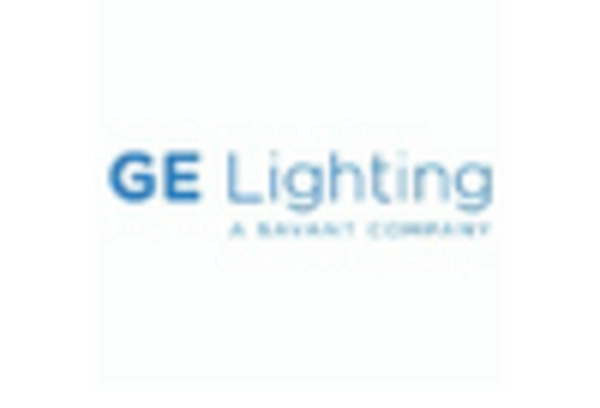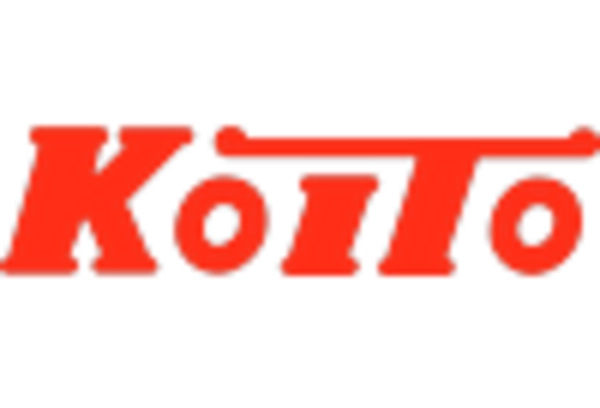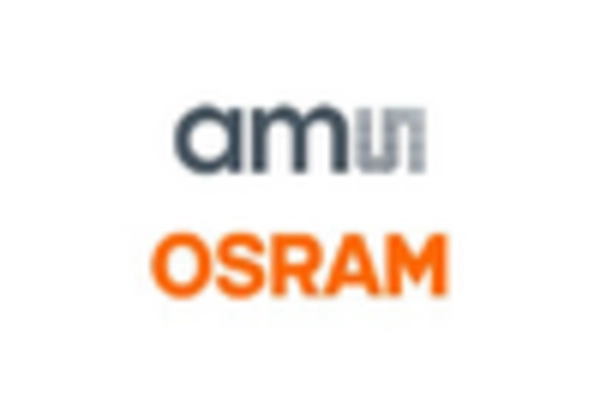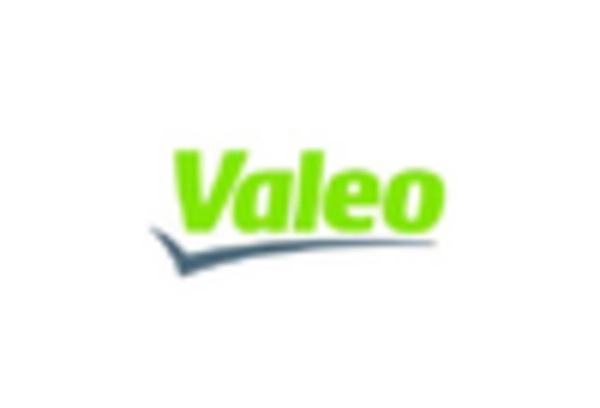Growth of the Automotive Sector
The Automotive Xenon Headlights Market is experiencing growth parallel to the expansion of the automotive sector. As vehicle production increases globally, the demand for advanced lighting solutions, including xenon headlights, is also on the rise. The automotive industry is witnessing a shift towards premium vehicles that often come equipped with high-performance lighting systems. Market analysis suggests that the increasing production of luxury and mid-range vehicles, which typically feature xenon headlights, is a key factor driving the Automotive Xenon Headlights Market. This trend indicates a robust market potential as manufacturers seek to enhance vehicle aesthetics and functionality through superior lighting technologies.
Rising Demand for Energy Efficiency
The Automotive Xenon Headlights Market is experiencing a notable increase in demand for energy-efficient lighting solutions. Xenon headlights, known for their superior brightness and lower energy consumption compared to traditional halogen bulbs, are becoming increasingly popular among consumers. This shift is driven by a growing awareness of environmental sustainability and the need to reduce carbon footprints. According to recent data, vehicles equipped with xenon headlights can consume up to 30% less energy, which not only benefits the environment but also enhances vehicle performance. As manufacturers strive to meet these consumer preferences, the Automotive Xenon Headlights Market is likely to see a surge in innovative products that prioritize energy efficiency.
Consumer Preference for Enhanced Visibility
In the Automotive Xenon Headlights Market, consumer preference for enhanced visibility is a significant driver of growth. As drivers increasingly prioritize safety, the demand for headlights that provide superior illumination in various driving conditions is on the rise. Xenon headlights offer a brighter and whiter light compared to traditional halogen options, improving visibility during nighttime and adverse weather conditions. Market data indicates that vehicles equipped with xenon headlights can reduce the risk of accidents by providing clearer sightlines. This growing consumer inclination towards safety features is likely to propel the Automotive Xenon Headlights Market forward, as manufacturers respond by integrating advanced lighting technologies into their vehicle designs.
Technological Innovations in Automotive Lighting
The Automotive Xenon Headlights Market is significantly influenced by ongoing technological innovations in automotive lighting. Advancements in xenon technology, such as adaptive lighting systems and automatic leveling features, are enhancing the functionality and appeal of xenon headlights. These innovations not only improve the driving experience but also align with consumer expectations for modern vehicle features. Furthermore, the integration of smart technologies, such as LED and xenon hybrid systems, is becoming more prevalent, offering consumers a combination of efficiency and performance. As these technologies continue to evolve, the Automotive Xenon Headlights Market is poised for substantial growth, driven by the demand for cutting-edge lighting solutions.
Regulatory Support for Advanced Lighting Technologies
The Automotive Xenon Headlights Market is bolstered by regulatory frameworks that promote the adoption of advanced lighting technologies. Governments across various regions are implementing stringent regulations aimed at improving road safety and reducing accidents caused by inadequate vehicle lighting. These regulations often encourage the use of xenon headlights due to their superior illumination capabilities. For instance, certain jurisdictions have mandated the use of high-intensity discharge (HID) lights, which include xenon technology, in new vehicle models. This regulatory support not only enhances safety on the roads but also drives growth in the Automotive Xenon Headlights Market as manufacturers adapt to comply with these evolving standards.

















Leave a Comment